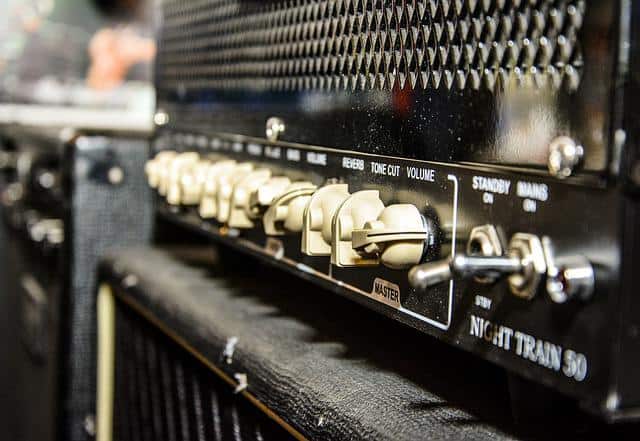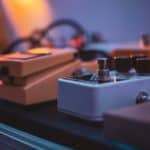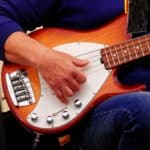There are so many effects pedals on the market that it can be overwhelming especially with the silly names that some of them have.
And then there are the different ways you can run the pedals into your amp: into the input jack or into an effects loop, which can be series/parallel and passive/active.
There is a lot to consider such as what exactly do passive and active mean in terms of an effects loop?
Both active and passive effects loops offer you direct access to the power-amp section of your amplifier. But the active loop’s extra circuitry acts as quality control for the signal as it loops, making it clearly a better choice in almost every situation.
Effects that deal with gain such as distortion, boost, etc., are usually run into the amp’s instrument input while the effects loop is suitable for modulation and time-based effects such as chorus, tremolo, flanger, and delay.
Since amp manufacturers don’t know what crazy combination players are going to dream up, they were nice enough to add some technology to keep things from boiling over.
How do active effects loops work on guitar amps?
Most effects loops that you find in modern-day amps will be active.
First, if you are running your signal through many pedals your signal may degrade due to the impedance of the devices and cables.
On the other hand, think about a delay pedal turned up to its maximum settings.
It can practically double your signal strength because of what you are playing at the moment combined with the echoes of what you played before.
You don’t want a weak signal and you don’t want to clip your amp either so that’s the advantage of the active circuit.
It buffers your signal to keep everything smooth.
Active effects loops can also be designed to run in parallel mode giving you control over a mix between the “dry” pre-amp signal and the “wet” effects loop signal.
How do passive effects loops work on guitar amps?
A passive effects loop is simply interrupting the signal between the preamp and power-amp with two jacks. It is basically a hack and not a very nice one.
Remember that this is after the preamp where you can adjust the gain so what happens here is going straight into the power-amp section (you can still make adjustments on the pedals themselves but this is obviously not ideal for playing live).
But sometimes if you want to modify an amplifier, there may not be extra room inside the chassis for an active loop circuit so it’s passive or nothing.
This should be acceptable if you are only using one or two pedals that you are very comfortable with but it is not a great solution.
Main differences between active and passive effects loops
The main difference between active and passive effects loops is that the former are a more modern and advanced alternative.
Active loops will act as a buffer, but also as a normalizer for the signal. Also, their ability to be run in parallel and add a dry/wet switch for your processed signal is fundamental for many players.
Passive effect loops don’t add any of these useful functionalities. Their only function is opening an input after the preamp section and the power section of your amp.
They might be better than nothing, but, in my opinion, way worse than an active alternative.
Which are better: active or passive effects loops?
I don’t think there’s much reason to choose a passive effects loop unless it is your only option in modding an amp.
I do subscribe to the idea that the more complicated something is, the more chance there is of something going wrong.
However, failure of the components in an active effects loop isn’t a common cause for a trip to the repair shop.
But…there is a concern with having either a passive or active (running in serial) loop in your amp.
If you are not using the effects loop and the return jack becomes damaged, dirty, or corroded, it may lose the connection across which the signal travels. Take a close look at a ¼” jack and you will see how this can happen.
In this situation, the power amp will be expecting a signal from the return jack which never comes. And that is a common cause of amps becoming intermittent or having no output at all.
This can usually be fixed with some deoxidizing spray, sanding at the points of contact, or re-tensioning the “springs” of the jack but it is something to watch out for.
Which one should you get?
So if you are using an older amp that has been modded or one that you plan to mod with a passive effects loop, try to keep things simple.
I don’t see much potential for problems if you are just running a (stationary) volume or EQ pedal in this type of loop because the volume isn’t fluctuating.
Or if you are interested in experimental or industrial music, you could always plug an oscillator into your amp with a lot of effects in the loop and try to create some cool percussive rhythms.
In this situation, some of the potential quirks of a passive loop could make your music more dynamic. After all, not everything has to sound the same.
However, most guitarists who play more traditional genres of music or shoe-gaze, which uses a lot of different effects, should be happier with the safety net of the active loop.
And now that you hopefully have a better idea about this aspect of effects loops you can go spend all your hard-earned money on boutique pedals.

Hello there, my name is Ramiro and I’ve been playing guitar for almost 20 years. I’m obsessed with everything gear-related and I thought it might be worth sharing it. From guitars, pedals, amps, and synths to studio gear and production tips, I hope you find what I post here useful, and I’ll try my best to keep it entertaining also.





